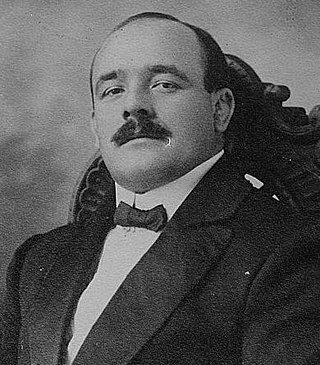
Jan Stanisław Cyganiewicz, better known by his ring name, Stanislaus Zbyszko, was a Polish strongman and professional wrestler. He was a three-time World Heavyweight Champion at his highest profile in the United States during the 1920s. The surname Zbyszko was only a nickname, given to him by friends due to his bravery when he was a child. The name comes from a fictional medieval Polish knight in the historical novel, The Knights of the Cross by Henryk Sienkiewicz. Stanislaus Zbyszko was the brother of Wladek Zbyszko (1891-1968).

Pehlwani, (पहलवानी) also known as Kushti, is a form of wrestling contested in South Asia. It was developed in the Mughal Empire by combining Persian Koshti pahlevani with influences from native Indian Malla-yuddha. The words pehlwani and kushti derive from the Persian terms pahlavani (heroic) and koshti respectively, meaning Heroic wrestling. A practitioner of this sport is referred to as a pehlwan while teachers are known as ustad.

Ghulam Mohammad Baksh Butt, commonly known as Rustam-e-Hind and by the ring name The Great Gama, was a pehlwani wrestler and strongman in British India. In the early 20th century, he was an undefeated wrestling champion of British India.
Imam Baksh Lone (1883-1977) was an Indian wrestler and a practitioner of the Indian wrestling style of Pehlwani. Imam was also the brother of Ghulam "The Great Gama" Muhammad Lone. Imam had arrived in England by April, 1910, along with fellow wrestlers from India, including his brother Ghulam Muhammad, Ahmed Bux, and Gamu, to participate in European catch wrestling tournaments.

Jatindra Charan Guha, popularly known by his ring name Gobar Guha, was an Indian wrestler and practitioner of Pehlwani. He was the first Asian to win the World Light Heavyweight Championship in the United States in 1921.

Gadowar Singh Sahota ; born December 8, 1954) is an Indo-Canadian semi-retired professional wrestler known as Gama Singh and Great Gama Sahota was a villainous mainstay and top attraction in Stu Hart's Stampede Wrestling in Calgary for much of the 1970s and 1980s. Sahota also wrestled internationally in Japan, South Africa, Germany, Kuwait, Dubai, Oman, Australia, the United States and the Caribbean. He also worked sporadically, mostly on overseas tours, for Vince McMahon and the World Wrestling Federation (WWF) from 1980-86. His nephew is former WWE Champion Jinder Mahal. Singh made a brief comeback of sorts in 2018, when he signed with Impact Wrestling as the manager for a stable of Indian wrestlers known as the Desi Hit Squad, but quietly left in 2020.
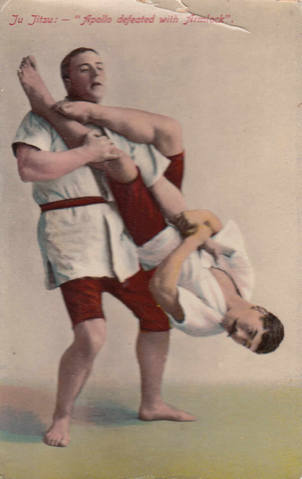
Yukio Tani was a pioneering Japanese jujutsu and judo instructor and professional challenge wrestler, notable for being one of the first jujutsu stylists to teach and compete outside of Japan.

Apollon the Mighty, born Louis Uni, was a French strongman, especially famous for his grip strength.

Yusuf İsmail, also known as Youssouf Ishmaelo, was a Turkish professional wrestler who competed in Europe and the United States as Yusuf Ismail the Terrible Turk during the 1890s. During his lifetime, native Turks knew him as Şumnulu Yusuf Pehlivan. However, writer Rıza Tevfik posthumously awarded him the honorific Koca ("Great"), and thus he was later remembered as Koca Yusuf.
The Bholu Brothers were Pakistani wrestlers born into a family of Kashmiris of Punjab.
Ambika Charan Guha, popularly known as Ambu babu or Ambu Guha, was an Indian wrestler who pioneered the growth of akhara culture in Bengal.
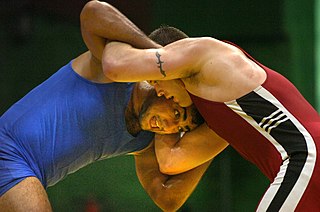
Wrestling is one of the oldest sports in India. Several regional styles and variations in folk wrestling exists in the country. Indian wrestlers have won numerous medals at international competitions in freestyle wrestling.
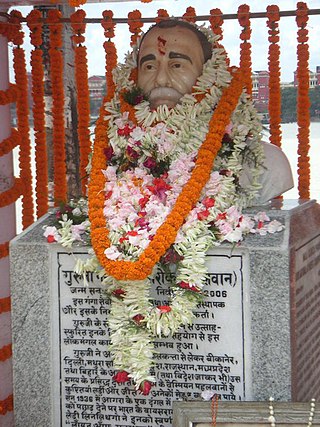
Nathmal Pahalwan also known as Nathu Pahalwan, Nathmal Pareek and Nathmal Kathotia (1911–2006) was a professional wrestler and a community activist from Calcutta, India. He was the founder of Ganga Seva Samiti Ghat and the wrestling arena in Calcutta, India. He was popularly known as Guruji and Pahalwanji by his close friends and disciples.

Bhartiya Kushti Patrika is an Indian monthly sports magazine focusing on Indian-style wrestling, Kushti. It was established by Ratan Patodi in early 1962. The magazine's main goal is to preserve the literature of Indian Wrestling. Wrestling has been in existence in India since ancient times. This ancient tradition has a significant place in Hindu mythology as Lord Hanuman and Lord Krishna loved to wrestle (कुश्ती).
Mahamalla Mangla Rai also known as "Rustam-e-Hind and Hind Kesari Mangla Rai" is the ring-name of Mangla Rai.
Wrestling in Pakistan, known locally as koshti, has been practiced since ancient times, mainly in Punjab (Pehlwani) and Sindh (Malakhra).
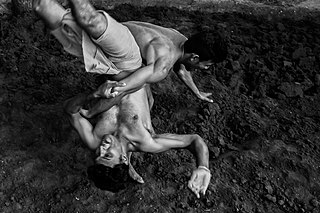
Gatta gusthi is a form of submission wrestling practiced in Kerala, India. It is competed inside an open ring on the ground, usually on a beach, known as godha. Wrestlers are called phayalvans. The sport consists of around 100 techniques. Gatta gusthi was popular in the state until the arrival of freestyle wrestling and karate in late 1960s. Its freestyle form is known simply as gusthi.
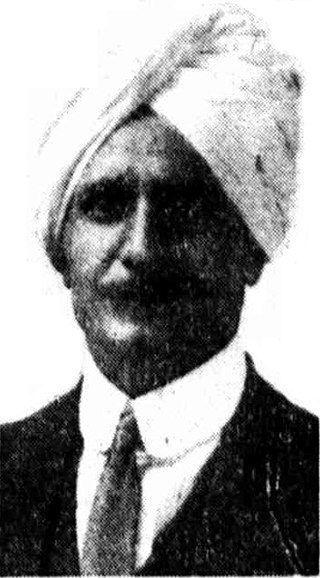
Buttan Singh was a professional wrestler in Australia, with a catch-as-catch-can style, and billed as one of the 'champion Hindu wrestlers of Australia', and 'champion of the world' by others. Singh was given to be 'a model for the young wrestlers of his day'.












